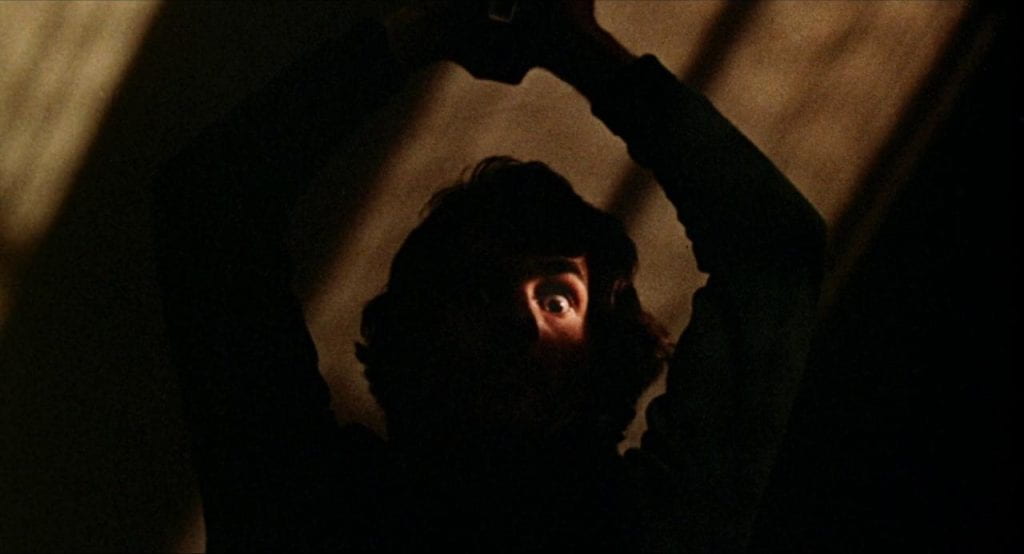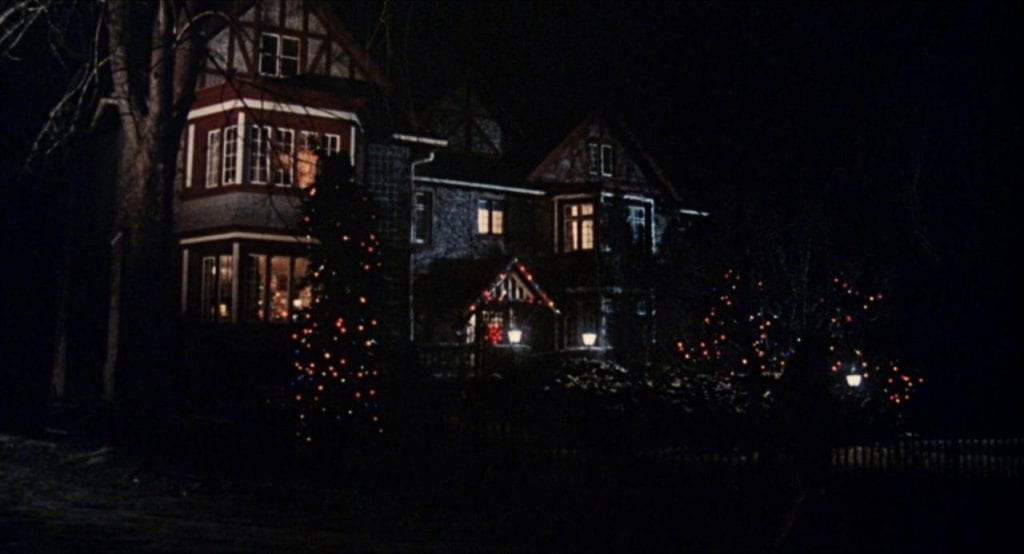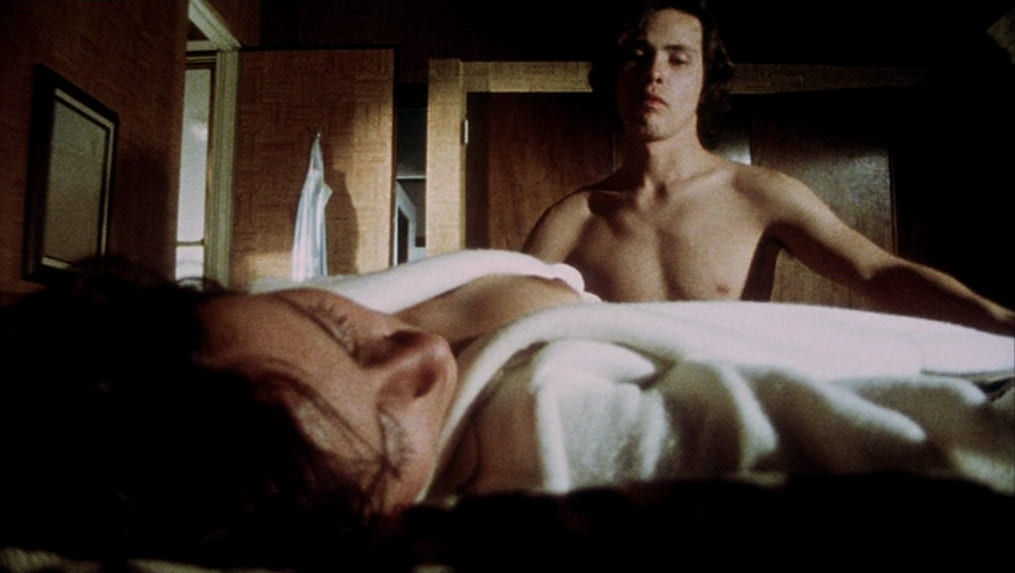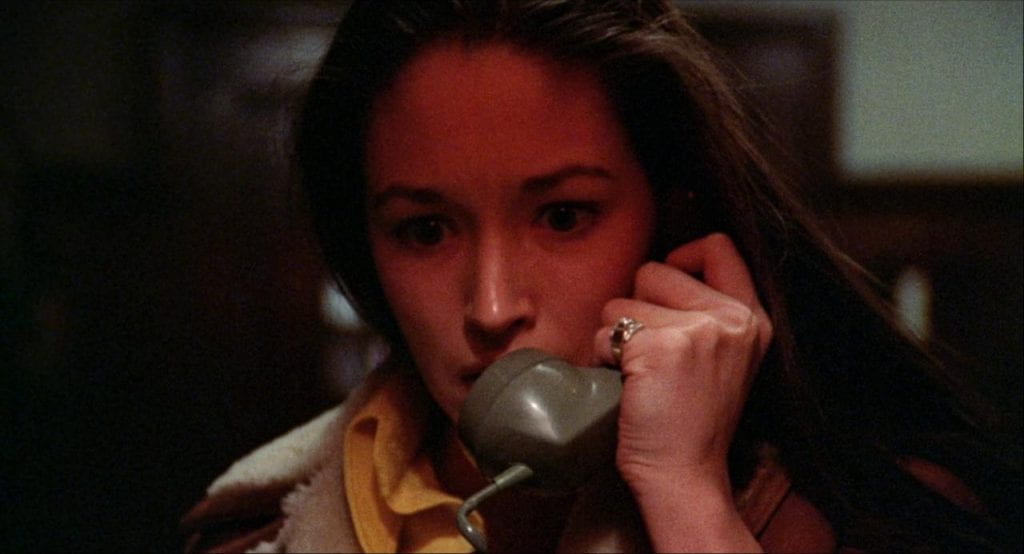
The killer strikes in Black Christmas (Clark, 1974)
Chris Forrester argues for the importance of Black Christmas to the slasher genre.
In the annals of horror history lurk a great many unsung classics, films beloved by cinephiles and/or horror fanatics but for a slew of reasons — often relating to their content and the genre’s reputation as a lower art form — uncelebrated and uncanonized. Perhaps the most significant of these is Bob Clark’s holiday chiller Black Christmas (1974), a taut little film (of the variety that would come to be known as the “slasher” film some years later) about a series of killings at a sorority house at Christmastime.
What’s essential about Black Christmas, beyond the sheer quality of its making, is the way that it essentially prefigures the components of the slasher film, which would eventually become rote and reproducible in better known franchise fare like Friday the 13th and the later Halloween and Nightmare on Elm Street films but here feel frightfully organic. The basic rules and components are as such: a group of young people, usually of high school or college age (as in Black Christmas) are hunted by a mysterious killer, who often bears the qualities of a stalker. It’s not enough that the protagonists are endangered by a murderer on the loose, they must also become his targets. The killer is typically male (more on this later) and his weapons are always intimate: an assortment of blades, hooks, saws, plastic bags, and hands — often penetrative, always hands-on, never so matter-of-fact and distancing as guns.



Also of significance is that the audience is sometimes allowed, or forced, to view the action through the perspective of the killer. As in the opening scene of Black Christmas and later key sequences in Halloween (Carpenter, 1978) and Friday the 13th (Cunningham, 1980), we experience the act of stalking through the perspective of the killer, a formal choice that emphasizes the inherent voyeurism of the slasher film and also the tension of the victims’ unawareness of their predicament. The origin of this visual leitmotif is, perhaps, a pair of films that distantly ancestor the modern slasher film: Michael Powell’s Peeping Tom (1960), in which the viewer experiences the violence of a psychotic killer through a camera affixed to his killing weapon (with which he documents his victims’ fear as they’re killed), and Alfred Hitchcock’s Psycho (1960) in which perhaps the most famous kill scene in film history (the shower stabbing) is conveyed in a vicious flurry of images that include POV shots of the killer’s view as his knife penetrates his victim.
Likewise, those films also anticipate a number of other serial killer movie tropes that would eventually coalesce into the slasher film, chiefly the weapon (often a penetrative tool — a sharp spike in Peeping Tom and a knife in Psycho); the largely female cast of victims (and the relationship of those women’s sexuality to their fate at the killer’s hands); and the male killer with a complicated relationship to/expression of gender (Norman Bates’s tormented drag performance of his dead mother in Psycho, Mark Lewis’s Freudian relationship to his father in Peeping Tom). Such tropes crop up in other pre-slasher horror films of the era: the (titular) phallic weapon looms large in The Texas Chainsaw Massacre (Hooper, 1974); sexual confusion motivates the killings of Martin (Romero, 1977); and Mari Colingwood in The Last House on the Left (Craven, 1972) is perhaps the original final girl (the popular term used to describe the often virginal or gender-confused survivors of the slasher’s slayings). But their most lucid coalescence comes in Black Christmas, whose configuration of them would come to inspire Halloween and thus essentially the entire slasher subgenre.





But what proves so indelible about Black Christmas is that here these components come not as repurposing (as in the slasher films of the genre’s classical period), nor slyly self-referential remixing (as in the post-modern slashers of the mid and late ’90s), nor homage and repetition (as in the remakes, reboots, sequels, spin-offs, and echoes of contemporary genre fare), but rather as organic outgrowths of the film’s narrative and thematic concerns. At the center of the film are a pair of sharply feminist anxieties affixed to a narrative basis drawn both from the popular “babysitter and the man upstairs” urban legend that would also inspire When a Stranger Calls (Walton, 1979) and from a series of real murders that took place in Montreal’s Westmount neighborhood in the late ’60s/early ’70s. You also have the sorority members’ largely dismissed concerns over the sexual prankster who often calls the house and the police’s failure to apprehend the killer (who they assume to be one character but is heard calling the house again in the film’s chilling final moments), as well as Jess’s concerns over her pregnancy and domestic strife over her desire to abort it.
Such concerns, and the degree of care they’re given, align the film more with the feminist aims of female-authored slashers, like the autocritical Slumber Party Massacre films and contrast rather sharply with the genre’s eventual reputation as exploitative and fetishistic in its violence toward women. Certainly, the same critique might even be levied at Black Christmas (of seven victims, five are female), but in spite of its grizzly violence — and often powered by it to dizzying effect — the film remains steadfastly invested in the women’s traumas.

Jess receives an alarming phone call in Black Christmas
Subsequent remakes — Black X-Mas (Morgan, 2006) and Black Christmas (Takal, 2019) — expand upon various facets of Clark’s film, the former by elaborating on the identity and history of the killer and the latter by contextualizing the sorority sisters’ stalking within the broader pains of misogyny and rape culture, but neither quite manages to hold a candle to the icy simplicity of their inspiration. Nearly 50 years and countless sort-of imitators later, there’s an undeniable power to Black Christmas that words can’t quite capture. It’s in the contrast between holiday warmth and shocking violence, the often horrifically striking images of mouths agape in suffocating plastic bags and bloody hands grasping at glass ornaments, the piercing moments of fear and pain not directly related to the killings but certainly brought on by them, and ultimately the sound of a ringing telephone that cuts through the snowy night to say what words won’t: it’s not over yet.
IU Cinema presents Black Christmas on December 8 as part of Helliday Slash Fest 2023 alongside shorts TreeVenge and White Elephant. The screening will be followed by a conversation on women in horror with White Elephant filmmaker Riley Dismore and moderated by IU Cinema Director Dr. Alicia Kozma.